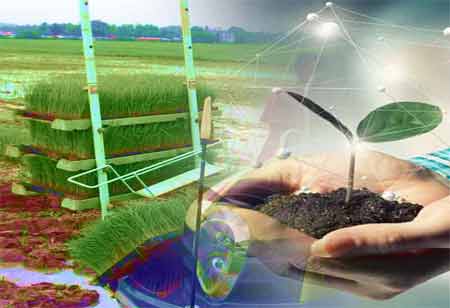Thank you for Subscribing to Agri Business Review Weekly Brief
Cultivating Resilient Urban Foodscapes
Hydroponic gardening emerges as a transformative solution, offering an efficient and sustainable method to cultivate produce in urban environments.

By
Agri Business Review | Friday, February 02, 2024
Stay ahead of the industry with exclusive feature stories on the top companies, expert insights and the latest news delivered straight to your inbox. Subscribe today.
Hydroponic gardens offer an innovative solution to transform urban spaces, utilising rooftop and vertical farming for sustainable food production. Community gardens enhance bonding and food security, reducing reliance on transportation.
FREMONT, CA: Hydroponic gardening emerges as a transformative solution, offering an efficient and sustainable method to cultivate produce in urban environments. This innovative approach maximises space, reduces water usage, and eliminates soil-related concerns, providing a viable means to address food scarcity in areas where traditional agriculture faces constraints.
An old cultivation technique that dates back to the early civilisations, hydroponics, has become popular again. By using mineral fertiliser solutions in water, this soil-less method allows plants to absorb nutrients directly, which accelerates growth and increases yields. Hydroponics' accessibility and efficiency have been substantially improved by recent technical developments. Its use in cities is becoming increasingly common because of its many benefits. As they take up very little area, hydroponic gardens are perfect for urban settings where there is a shortage of available land.
By utilizing up to 90 per cent less water than traditional farming methods, this technique alleviates strain on the region's water resources. The absence of soil significantly diminishes the risk of contamination, ensuring that the produce remains free from harmful contaminants. Additionally, hydroponics enables year-round cultivation, offering a consistent supply of fresh produce independent of seasonal variations, and often yields two to three times more than conventional farming, showcasing its resource efficiency.
Hydroponic gardens can revolutionise underutilised urban areas by reviving them as vibrant hubs for food production and community engagement.
Rooftop Gardens: These gardens are beneficial additions, improving air quality, greening urban environments, and reducing the impact of the heat island effect. Their many advantages include lower energy use, a calmer living environment for inhabitants, an encouragement to engage in agriculture, and a chance to bond with the natural world.
Vertical Farming: This farming is an effective way to use hydroponics in urban environments. Hydroponic farming allows for increased crop density and efficient use of available space by growing plants vertically on stacked shelves. This idea is especially useful in densely populated places where land is in high demand. Moreover, vertical farming encourages the creation of green jobs, which boosts the local economy.
Community Gardens: Urban neighbourhoods can benefit greatly from hydroponic community gardens, which foster community cohesion and encourage members to actively participate in food production. In addition to strengthening links within the community, these gardens also function as educational spaces, passing along useful knowledge and encouraging a feeling of environmental responsibility in the local population.
Food Security: Regarding food security, hydroponic gardens emerge as pivotal players in enhancing the nutritional landscape of urban areas. By cultivating fresh produce locally, hydroponic systems reduce dependence on long-distance transportation. This curtails the carbon footprint associated with food distribution and ensures that everyone has access to healthy, nutrient-rich food. In this way, hydroponic gardens contribute significantly to creating a more sustainable and secure food ecosystem within urban environments.
The hydroponic solution is more than a response to a problem; it is a catalyst for positive change, bringing about a future where urban food deserts transform into vibrant, self-sufficient oases of nutrition and community well-being.





